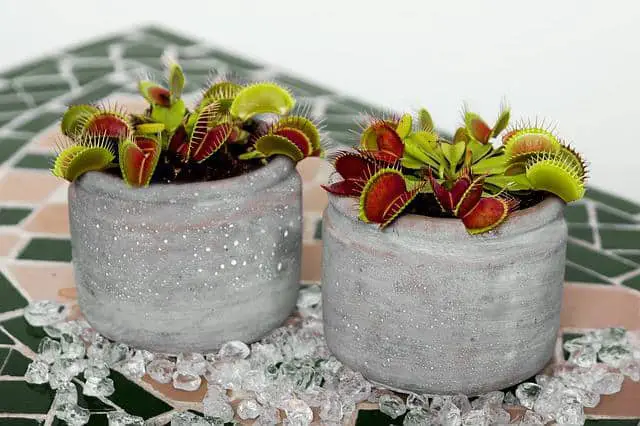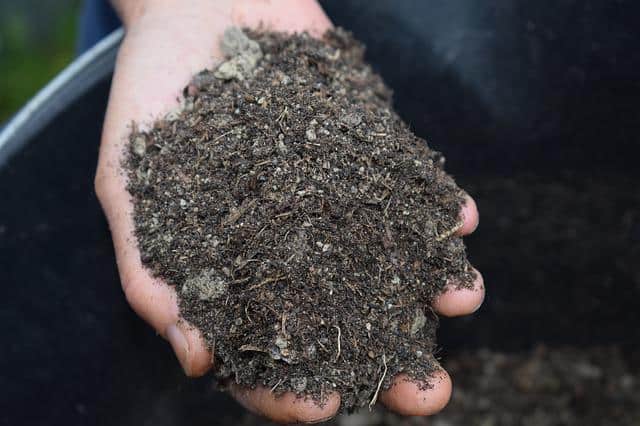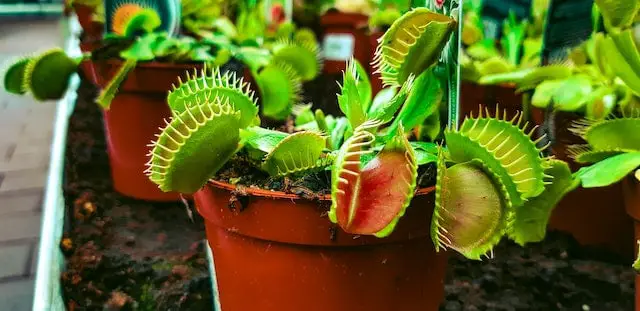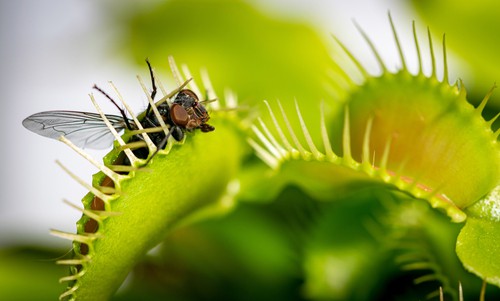When it comes to carnivorous plants straight out of science fiction or horror movie, the poor Pitcher Plant plays second fiddle to the Venus Flytrap. Because Venus flytraps are carnivorous plants, it’s important to provide them with a regular source of food in order to keep them healthy and thriving. The Venus Flytrap is the epitome of meat-eating plants in the minds of most people. But how long can a Venus flytrap live without food?
How Long Can a Venus Flytrap Live Without Food?

The Venus Flytrap is a plant, first and foremost. The fact that it clamps down on naïve bugs is simply an added bonus. The Venus Flytrap can live as long as many other plants solely based on sunshine, water, and nutrients in the soil.
At the end of the day, the Venus Flytrap does many of the things that other plants do. It has roots that draw nutrients and water from the surrounding soil and it undergoes photosynthesis as well. Does eating bugs help? Sure. But it’s like having an ice cream sandwich for dessert.
What if the Venus Flytrap Never Gets Any Bugs?
If it never gets any insects, the Venus Flytrap will go on living so long as it has plenty of nutrition in other sources, such as regular watering and a compatible soil base in which its roots can draw sustenance.
1. Venus Flytrap Soil

Most of the people that ask about this topic are keeping their Venus Flytraps indoors, which means that the number of bugs flying around might be few and far between for the carnivorous little guy.
A lot of people purchase those Venus Flytrap kits that are supposed to have 20 flytraps in them and they grow out of some sort of weird soil disc that you’re supposed to expand underwater.
These kits often come with a dome and are even more often doomed to absolute failure. However, if you get a Venus Flytrap and plant it the old-fashioned way, by germinating it and then planting it, you will need the right kind of soil.
A Flytrap doesn’t need a massive pot to grow in—just something that is about 4-5 inches in diameter. Flytraps only prefer distilled water or purified water and none of that tap water stuff. Stick with soil that is a combination of peat moss and sand.
2. Feeding A Venus Flytrap
Unless you happen to have a house that is full of bugs, you’re going to have to treat your Venus Flytrap as you would a pet snake, bunny, or hamster. While a Venus Flytrap, in the right soil and receiving plenty of sun and water, will likely survive on its own, it’s always fun to watch it do its thing.
It’s important that you only ever feed a Venus Flytrap something that it could normally handle in the wild. Don’t throw a coffee bean in its mouth just to see it clamp down. You also need to feed it things that are ⅓ its own size or smaller. Nothing larger than that will do.
- Crickets
- Fruit Flies
- Small worms
- Gnats
- Small beetles
That’s not even close to the entire list by a long shot but it gives you a general idea of what you can and cannot feed them. If you feed them dead, dried-up insects, they may not react as you would expect.
You may have to move the dead insect around until it tickles the Venus Flytrap’s receptors until it snaps closed.
3. The Best Place to Keep a Venus Flytrap

A Venus Flytrap is just like most other plants. It needs to have plenty of sunshine and water. That doesn’t mean that it needs 14 hours of sunlight, but it does need a fair share. If you need an idea of the climate that a Venus Flytrap needs, think of North and South Carolina, the two states to which the Venus Flytrap is native.
In all reality, the Venus Flytrap is not an exotic houseplant from some mysterious island in the Pacific. It’s from right here in the United States, on the East Coast. While it needs plenty of sunshine, you should keep it stored somewhere cool.
As long as your Venus Flytrap has plenty of water and sunshine, it will survive as long as any other houseplant, whether it happens to catch a stray bug or not.
4. Dealing with an Ailing Venus Flytrap
One of the biggest things that will do in a Venus Flytrap is giving it something that is more than it can handle. These Flytraps expend an enormous amount of energy to clamp down, hold, and digest their prey.
If you give it something that is too big, it may die in the process of trying to eat the thing. Outside of its carnivorous nature, a Venus Flytrap needs as much attention as your other houseplants.
That means periodically providing it with water and ensuring that your Venus Flytrap gets plenty of sun. It’s also important to understand that the traps on a Venus Flytrap may be many traps that are all a part of a single plant.
Previous post: Dying Zebra Cactus?
All Things Considered
The Venus Flytrap may be a carnivorous plant but that doesn’t mean that it needs to use its bug-catching mechanism to survive. It is more than capable of existing as any other plant would, surviving on sunlight and water.
Frequently Asked Questions
How long can Venus Flytraps survive without eating?
It can survive indefinitely, so long as it has plenty of water, good sunshine, and nutrients in the soil.
Can you overfeed a Venus Flytrap?
Not really, unless you feed it something that is way too large. So long as the Flytrap has plenty of normal-sized food that it can consume on a regular basis, it will continue to grow, producing more traps from a single plant.
Can a Venus Flytrap bite you?
Sure. But it’s not going to bite your finger off. A Venus Flytrap has next to zero strength in terms of pounds per square inch biting power. It merely traps its prey in what resembles a jail cell and consumes them while they can see their own freedom a centimeter away.
What happens if there is mold on your Venus Flytrap?
Usually, the only mold that goes after a Flytrap is saprophyte and it should be quarantined from the rest of the plant before it can spread.

Hey, I’m Lisa and I’ve been an avid gardener for over 30 years. I love writing, talking and living in the garden! Feel free to connect with me on my socials below

